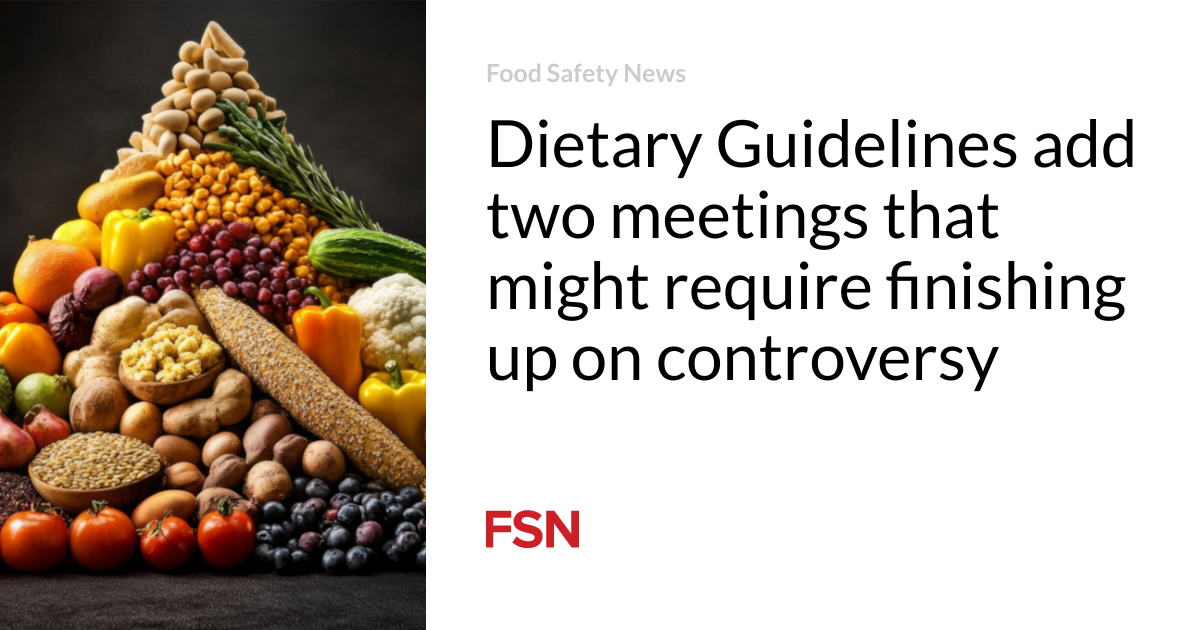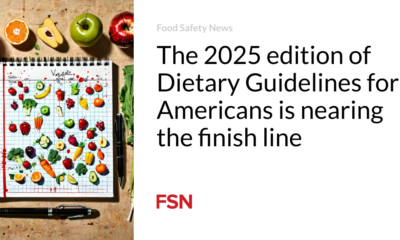Food
Dietary guidelines add two meetings where a controversy may need to be resolved

It looked like the 2025 Dietary Guidelines Advisory Committee would conclude with another meeting, but now there are two.
The joint process between the U.S. Department of Health and Human Service (HHS) and the U.S. Department of Agriculture (USDA) could face renewed criticism as RFK Jr. largely blamed the FDA’s nutritional recommendations for its dire state of public health, and it is the focus of the presidential campaign.
It’s not something that HHS and USDA probably intended to get into that campaign.
However, HHS and USDA invite the public to attend the final two public meetings of the 2025 Dietary Guidelines Advisory Committee.
The sixth meeting will provide updates from each subcommittee on progress made since the committee’s fifth public meeting in May. Topics covered include the review and synthesis of evidence, draft conclusion statements, and plans to conclude the work of the committee, including its scientific report.
A date has also been set for the seventh meeting as the final meeting of the 2025 process. It can be viewed virtually via livestream or by recording.
Meeting times:
- Meeting 6: Wednesday, September 25 from 9am to 4:30pm EST, and Thursday, September 26 from 8:30am to 3pm EST.
- Meeting 7: Monday October 21 – Tuesday October 22
The committee will accept comments from the public until October 7, 2024. Submit in writing public comments.
More about the Dietary Guidelines for Americans
Since 1990, the Secretaries of Agriculture and Health and Human Services have been required by law to publish the Dietary Guidelines for Americans every five years. The recommendations of the expert committee should be submitted to the secretaries who will make the final decisions. The Dietary Guidelines then became the cornerstone of the federal food and nutrition guidelines.
“The nature of nutritional guidance, providing advice on foods and nutrients that you can eat more or less of, has remained relatively consistent,” the government said. “However, some of the specific messages have changed as nutritional science has progressed and the methods used to assess the science have advanced.”
The U.S. Departments of Health and Human Services (HHS) and Agriculture (USDA), with input from federal experts and the public, identified proposed scientific questions and subsequently obtained the Dietary Guidelines Advisory Committee’s review.
It was up to the committee members to refine and prioritize the questions, work together to develop protocols describing how they plan to review the science, review and synthesize the evidence based on their protocols, present and consider public comments.
The committee’s work culminates in a comprehensive scientific report on the current state of nutritional science and provides independent recommendations to HHS and USDA.
Upon the presentation of the report to the Secretaries or when the two-year charter expires, whichever occurs first, the committee’s activities will end and the departments will develop the next edition of the Dietary Guidelines, based on the work of the committee, existing evidence-based federal guidelines, input from federal agencies, and public comments.
The committee examined the evidence using three approaches: data analysis, food pattern modeling and systematic reviews. Each approach has its own rigorous, protocol-driven methodology and plays a unique, complementary role in exploring the science. For each approach, HHS and USDA staff supported the committee’s review of the evidence.
Until recently, the update to the guidelines has not caused much controversy.
The USDA and HHS are jointly responsible for updating the guidelines.
“The Dietary Guidelines for Americans are a framework for healthy eating, not a one-size-fits-all mold that everyone must fit into,” the letter said. “The American population is diverse, which is reflected in what and how we eat. “
While HHS and USDA acknowledge that most Americans are not following the guidelines, the U.S. wine industry is concerned about following World Health Organization guidelines. U.S. dietary guidelines say men can safely drink two drinks a day, and women one. Canada’s dietary guidelines recommend no more than two drinks per week, with polls showing 66 per cent of people aged 21 to 39 saying they would cut back.
The current ninth edition of the Dietary Guidelines for Americans (DGA) is for 2020-25. For the first time, it contains nutritional guidelines for children from birth to 23 months.
At the end of the last five years, HHS and USDA rejected the advice of the last expert panel, which recommended that the guidelines set new lower targets for sugar and alcoholic beverage consumption.
(Click here to sign up for a free subscription to Food Safety News.)













